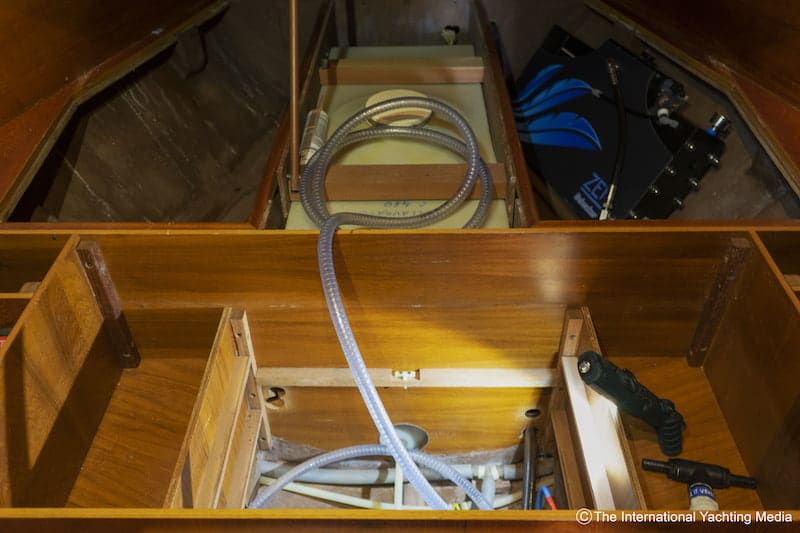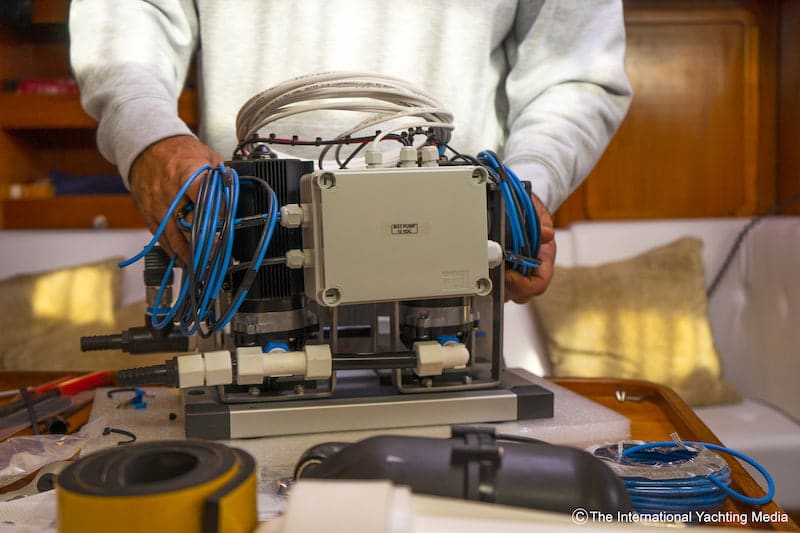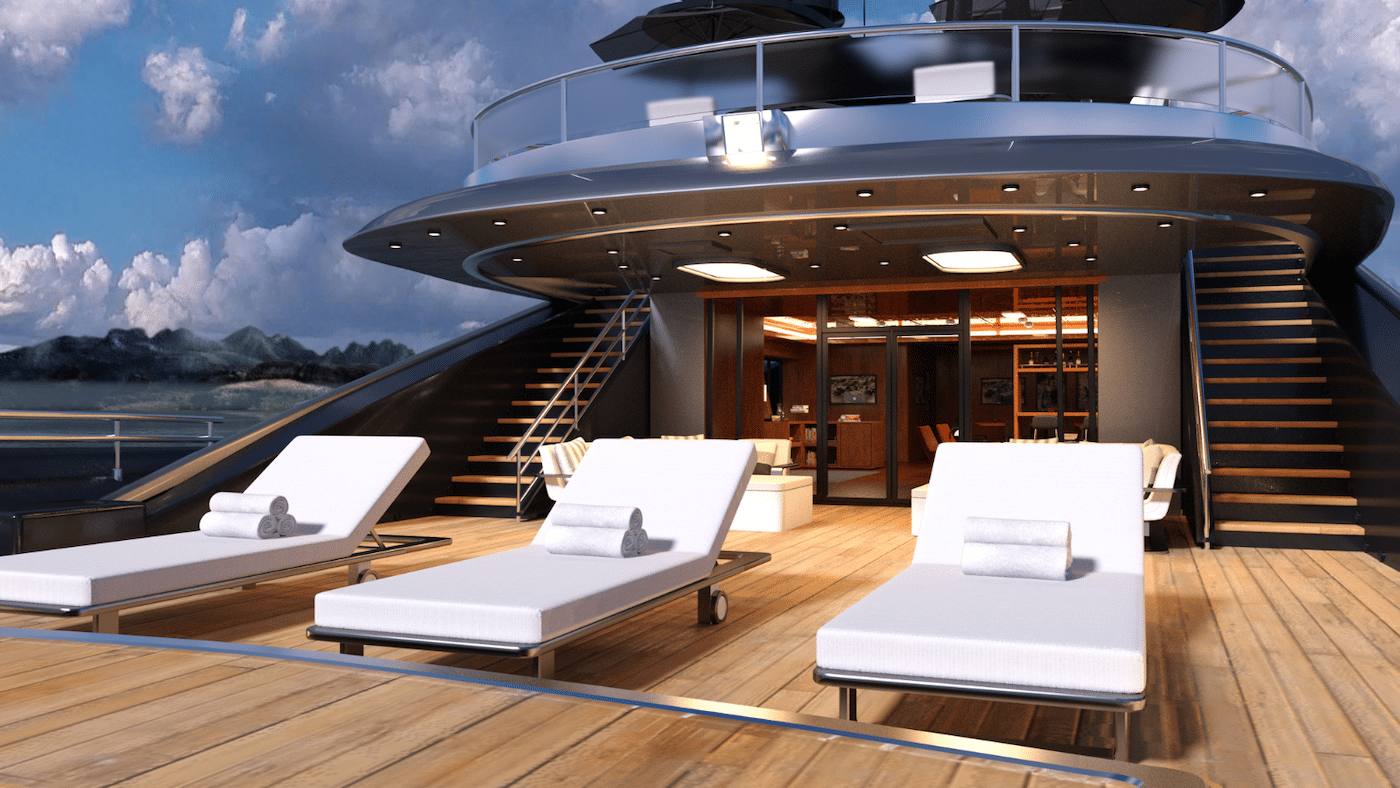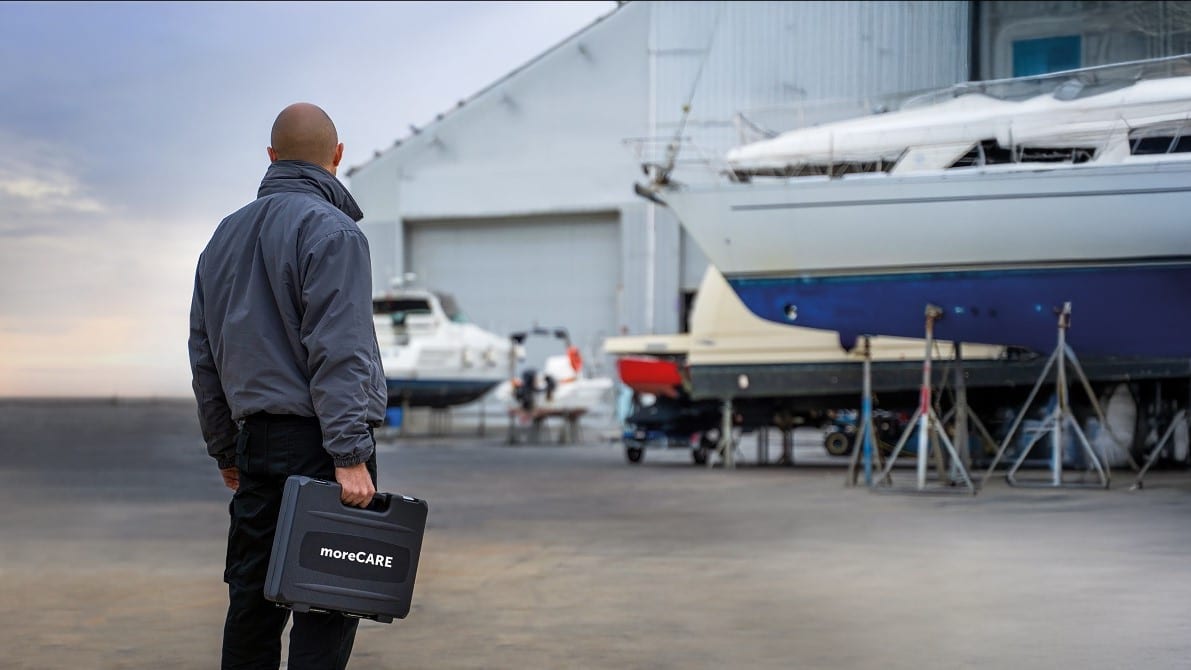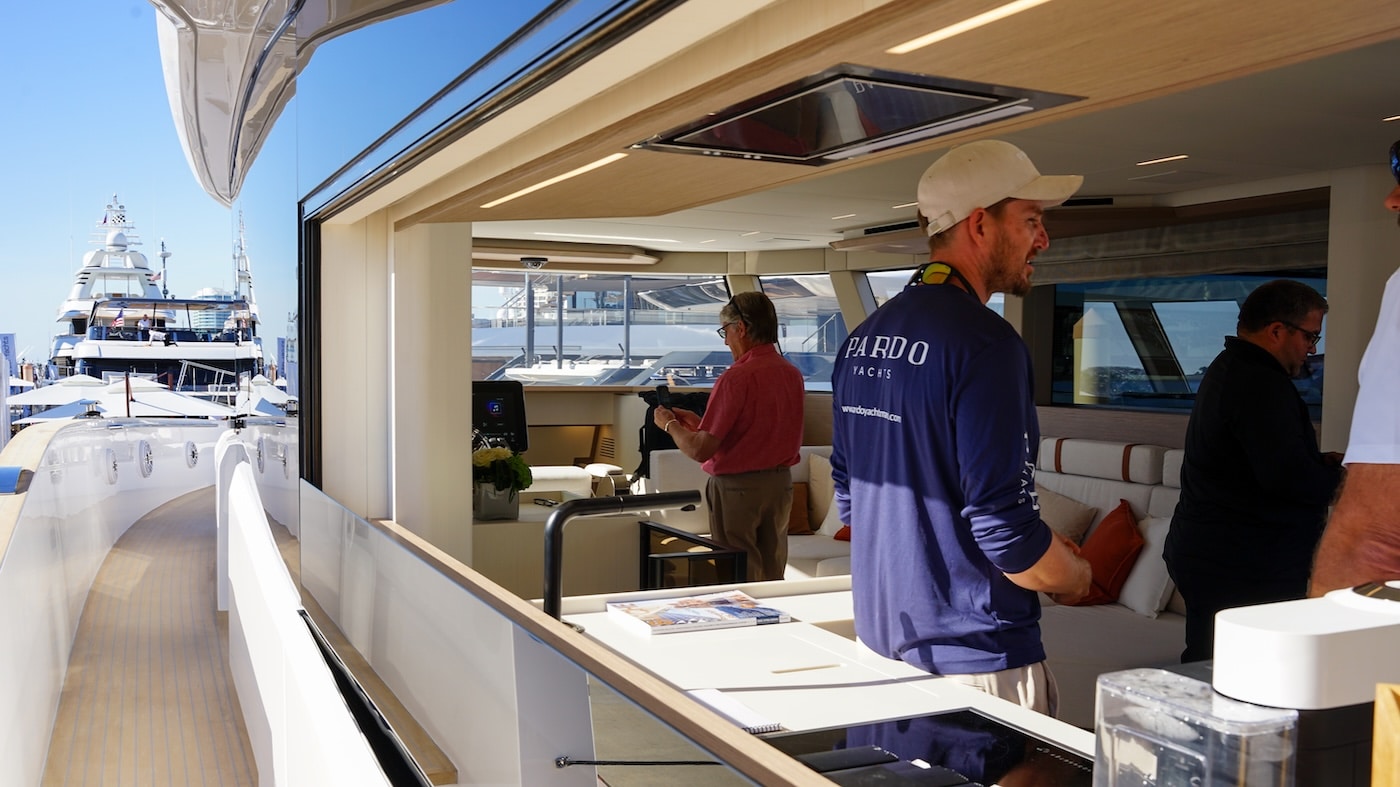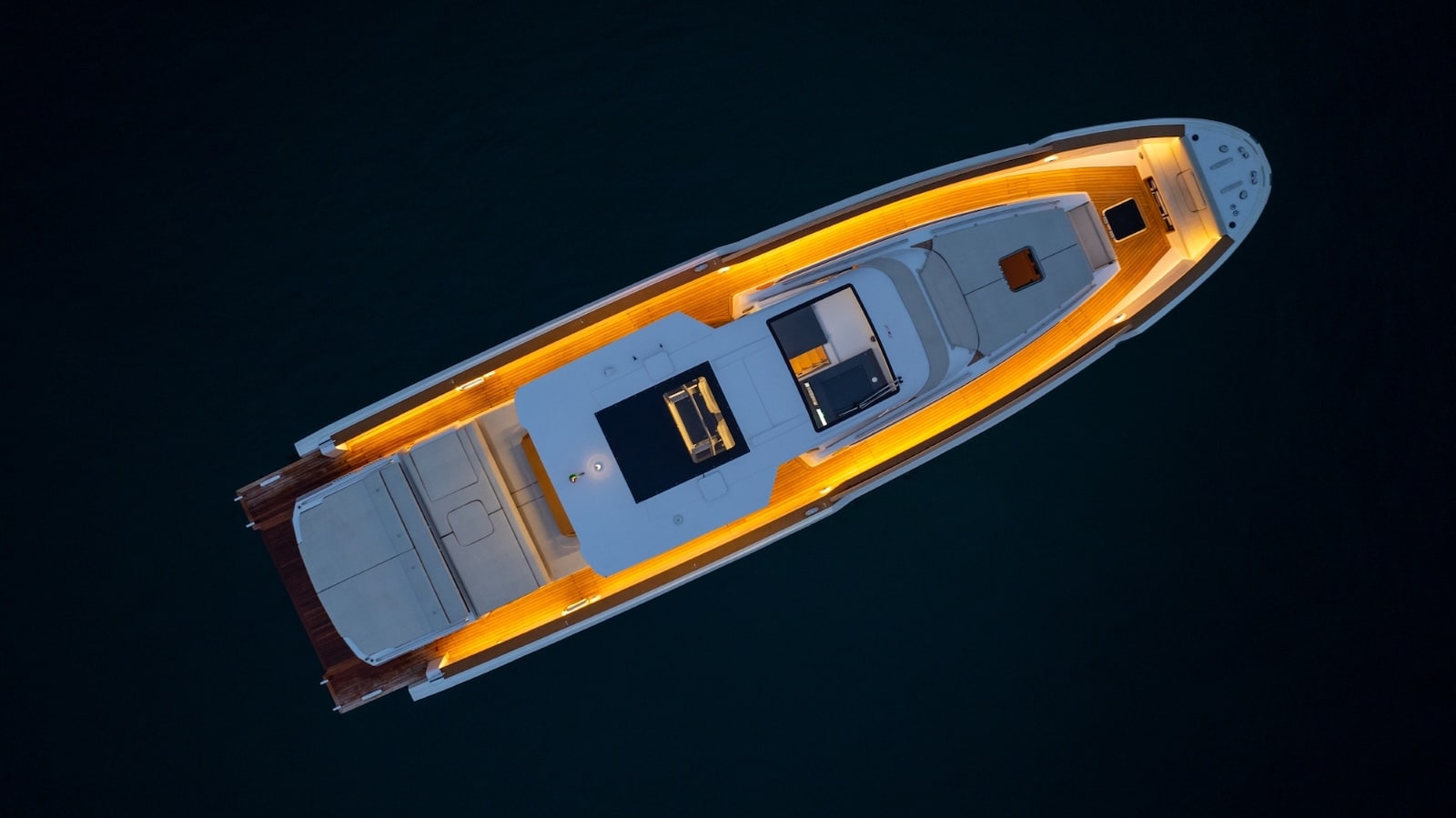The installation of the Schenker Zen 50 on the Daydreamer : a compact watermaker which takes up very little space
The Schenker Zen 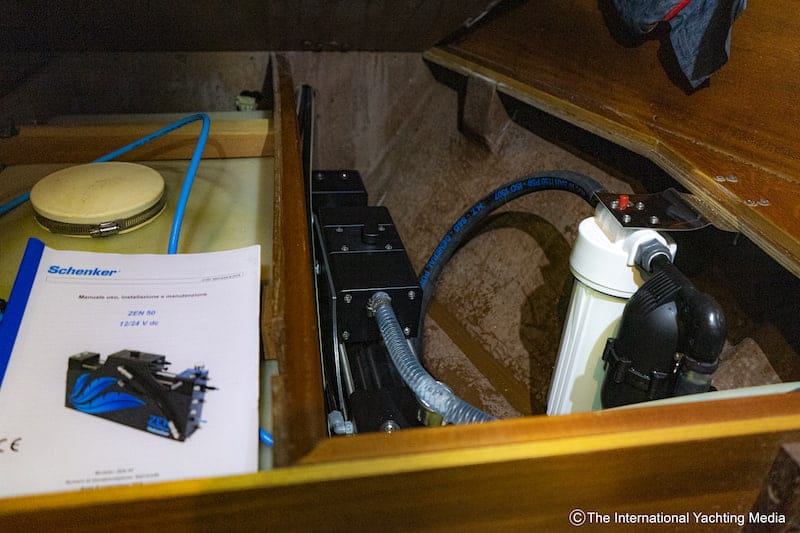
The characteristics that differentiate the Zen watermakers from the others consist in the presence of a very compact machine body separated from the pump unit and filters, which are equally independent. As a result, the wakermaker can be installed in various and little capacious spaces.
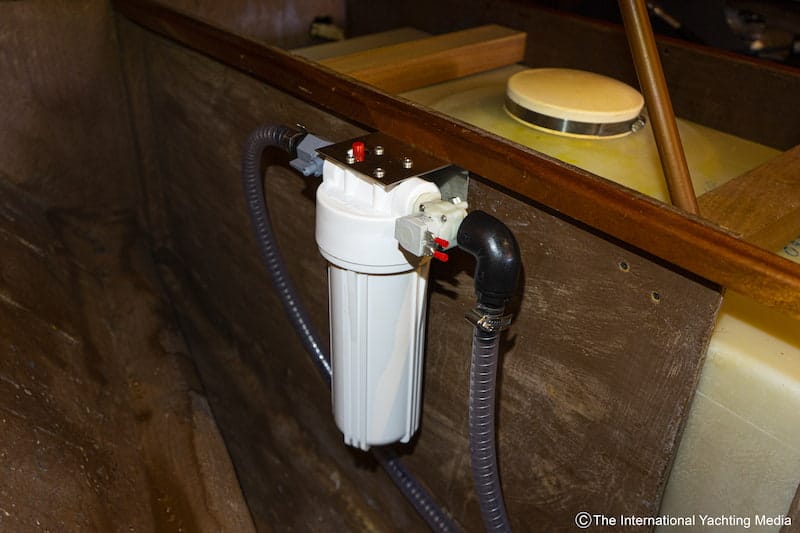
If, moreover, the boat is, like our Daydreamer, is a little dated and has very little space available, then the installation of a Schenker Zen watermaker becomes almost compulsory.
We therefore turn to the manufacturer and, among the three Zen models avaiable ( 30, 50 and 100 l/h), we choose to install and test the 50 l/h one. The Schenker Zen 50 is a machine that immediately seems perfect for our Daydreamer (a 14-meter sailboat, without any engine/technical room) to meet the daily fresh water demand, thus extending the time we spend at sea.
Schenker Zen 50 unpacking
What we receive is a 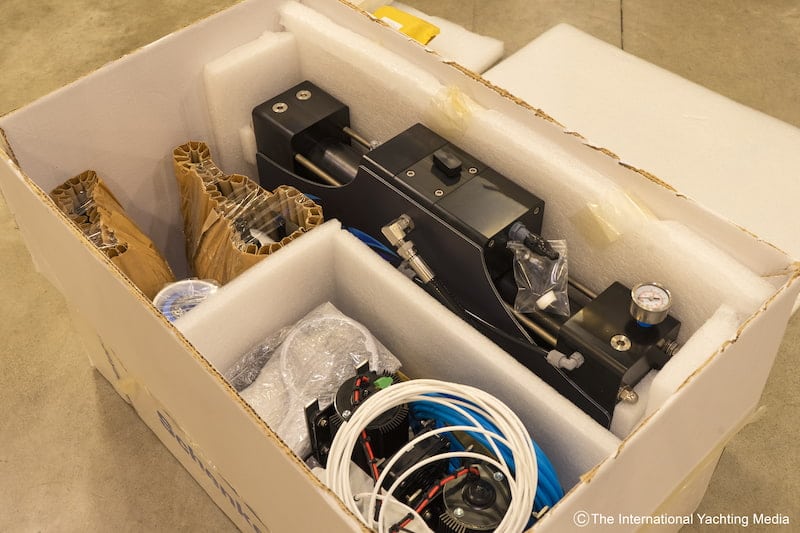
- The watermaker, which works by reverse osmosis and looks similar to a 24-hour case, whose maximum dimensions measure 658.8 x 384.9 x 113 cm
- The pump, which is powered by 12 or 24 V, whose maximum dimensions measure 435 x 265 x 229 cm
- An active carbon filter, combined with a solenoid valve and a shut-off valve for the autoclave
- A 5 micron filter with a pressure accumulator
- A T check valve
- A wall filter for salt water
- An outlet pipe for fresh water (5 m)
- The push-button switch with On, Off and Flushing control
Once connected, these parts will make up the desalination system. In the package there are also the following accessories:
- A circular key to unscrew the filters
- A series of fittings for linear and elbow pipes
- Some fixing plates
- Fixing screws
Instead, what we need to get for the installation of the Schenker Zen 50 are the high and low pressure pipes that will be used to connect the various parts to each other and to the seacocks.
Schenker Zen 50 Installation
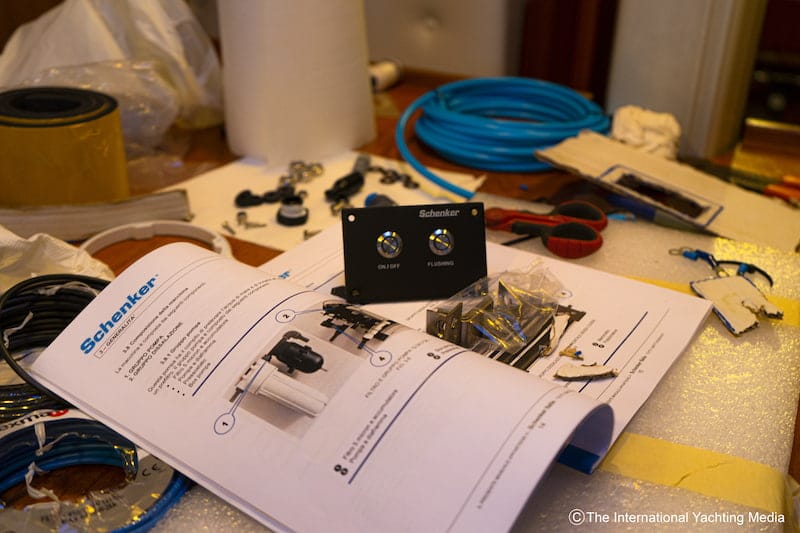
The Schenker Zen is therefore the only option possible and, after some careful measurements and evaluations, we choose to install it, dividing the components between the different lockers available in the fore section of our boat.
The compartments available are three and each of them can comfortably accommodate some of the parts in total comfort, so that they are easy to reach not only during installation but also for any maintenance interventions.
Another important advantage is given by the proximity to the seacocks, the fresh water tank and side drains, that is the three external components to which the watermaker must be connected. We will therefore not have to install any pipes throughout the hull.
The video below shows all the installation details which we can sumamrize as follows: both the salt water filter, which draws from a seacock, and the activated carbon filter that draws from the on-board fresh water circuit must be connected to the non-return T-valve. The outlet pipe of the latter is connected to the pump unit which, according to the need, receives fresh or salt water. The pump, which has the task of taking salt water and putting it under pressure, is connected to the 5 micron filter and to the accumulator through a high pressure tube.
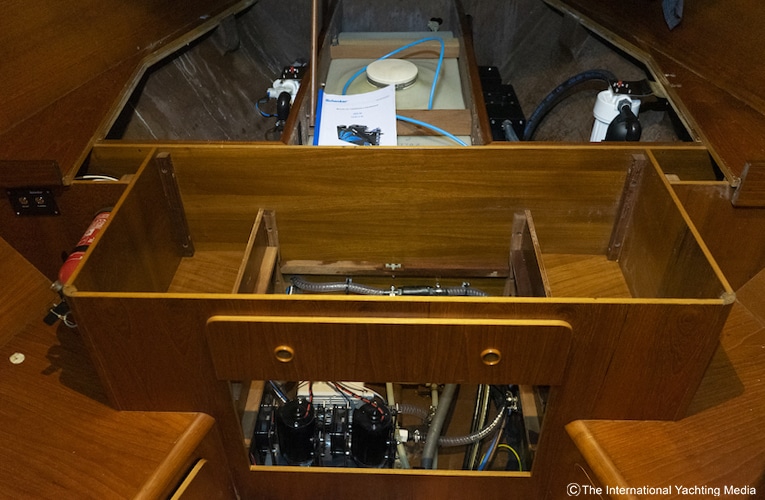
These last parts must be connected to the reverse osmosis machine which discharges the desalinated water into the tank, while the salty waste one ends up outside the boat by means of a tube which must be connected to a side outlet.
If both the positisiong and anchoring of the parts are carefully calculated, installation is easy and the body of the watermaker can be positioned both vertically and horizontally. We only have to drill some holes to pass the pipes that connect the parts and “pull” a 12 V power source with a sufficiently wide cable, near the pump. It is however a job that we advise you to have performed by a professional; in our case, the installer is Ugo Soldi of Continetal Marine.
The total time we spend on installing the Schenker Zen 50, without considering the positioning study, is just one day of work.
The first test of the Schenker Zen 50
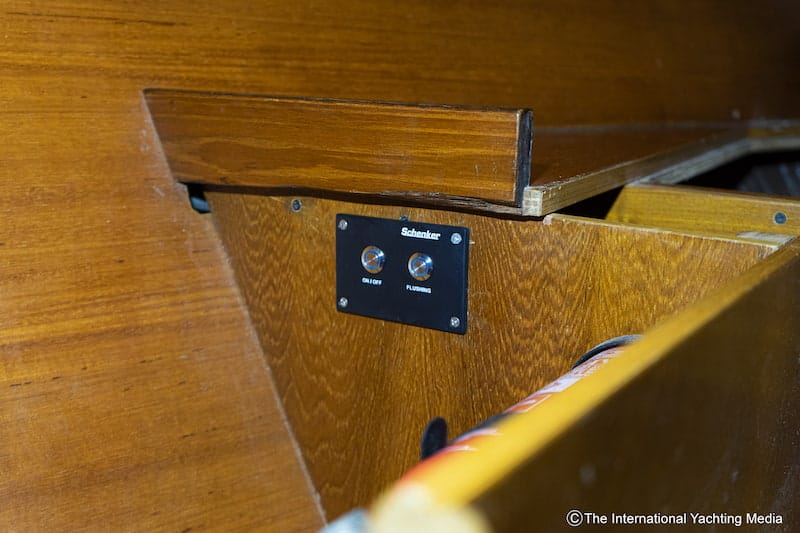
We hold down the rinse button for 5 seconds on the switchboard and, as expected, the watermaker turns on and goes into pressure. After about 4 minutes, it begins, without hesitation, to produce fresh water.
A result that will not seem true to those who have already had to deal with the watermakers that, very often, run into trouble at this stage.
On the second 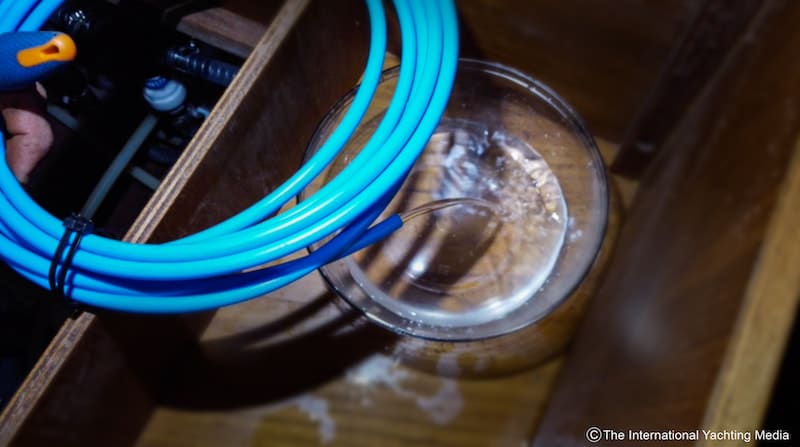
The Zen 50 works without having to adjust the pressure flow, which the machine performs automatically. This is a significant advantage that will be greatly appreciated as well as the remote control functions, which allow programmed start and stop and half-power operation for energy saving.
Conclusions
Thanks to the small size of its body and the possibility to install separate filters and pump (therefore also in the smallest lockers), the Schenker 50 is suitable for equipping boats on which it was previously unthinkable to have fresh water and where, now, the production of no less than 50 l/ h becomes possible.
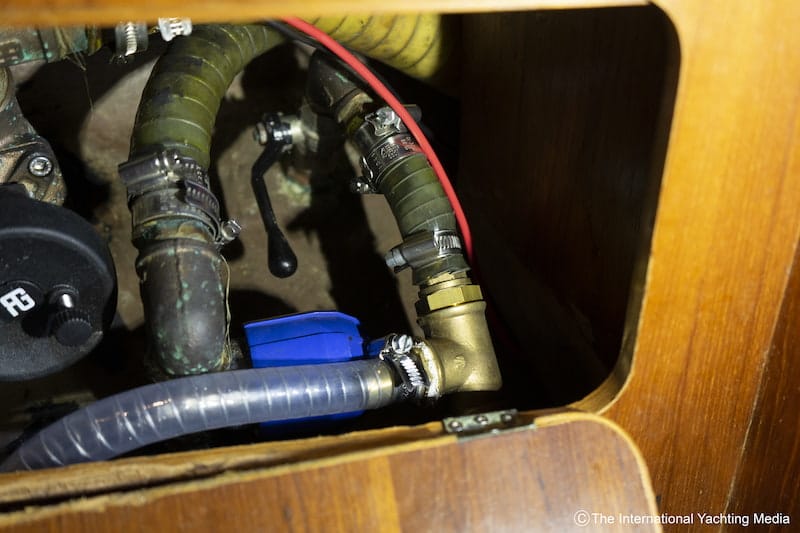
The price of the Schenker Zen 50 is € 4.985,00, VAT excluded. Not bad, if you consider that the device contributes to make the boat more independent, extending the cruising range and decreasing the stops in the port.
After installation, we can only express a positive opinion on this compact watermaker which immediately proved to be prompt and efficient.
Now, our test can start officially. In the next few months, indeed, we will use only use the watermaker to fill the tanks of our Daydreamer in order to quickly submit it to the stress it would have after a few seasons of use.
Over the next few months, we will keep you updated on how it works and on the results of our test.
Sales Office: +39 081 5593505
Technical Office: +39 081 5590931

